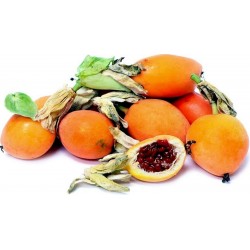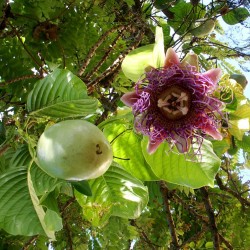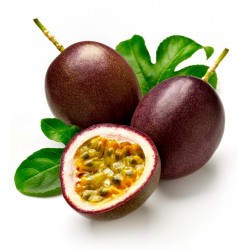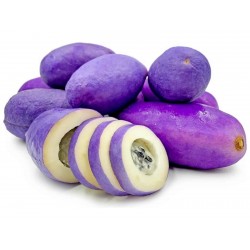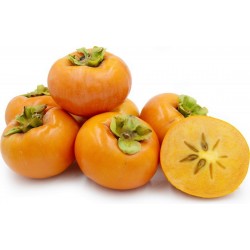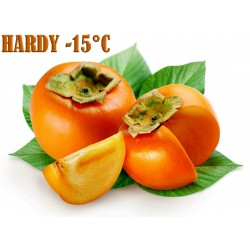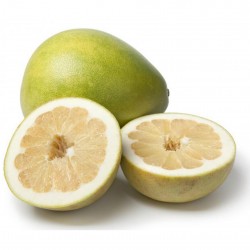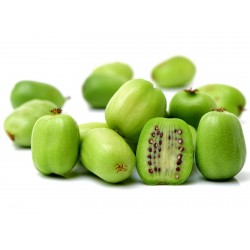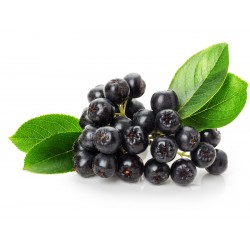
Coming Soon

Kokum - Mangosteen Seeds...
Price
€3.95
(SKU: V 17)
Seeds Gallery EU,
5/
5
<!DOCTYPE html>
<html>
<head>
<meta http-equiv="Content-Type" content="text/html; charset=UTF-8" />
</head>
<body>
<h2><strong>Kokum butter tree, Mangosteen </strong><strong>Seeds (Garcinia indica)</strong></h2>
<h2><span style="color: #ff0000;"><strong>Price for Package of 2 seeds.</strong></span></h2>
<p>Kokum is an exotic tree with a dense canopy of green leaves and red-tinged tender emerging leaves. It is indigenous to the Western Ghats region of India, along the western coast. The tree is large and handsome, having elliptic, oblong or oblong-lanceolate, deep-green glossy leaves, 5.5-8 cm long and 2.5-3 cm broad.</p>
<p>The flowers are fleshy, dark pink, solitary, or in spreading cluster. The fruit is brownish or brownish-gray, marbled with yellow, and is crowned by the 4-parted, stalkless stigma. There are from 6 to 8 seeds, and the pulp is juicy, white, and delicious in taste and odor. It is about the size of an orange. An average kokum tree bears hundreds of fruits during summer. When they are tender, they are green in color. As they ripen, they get a beautiful purple color.</p>
<p>The fruits are plucked when they are ripe. The tree is a source of kokum butter which is used in cosmetics and confectionery.</p>
<h2><span class="mw-headline" id="Uses">Uses</span></h2>
<h3><span class="mw-headline" id="Culinary_uses">Culinary uses</span></h3>
<div class="thumb tright">
<div class="thumbinner"><img alt="Seeds Garcinia indica Kokum butter tree, Mangosteen" src="https://upload.wikimedia.org/wikipedia/commons/thumb/2/27/Kokumfruitsdried.jpg/220px-Kokumfruitsdried.jpg" decoding="async" width="220" height="151" class="thumbimage" srcset="//upload.wikimedia.org/wikipedia/commons/thumb/2/27/Kokumfruitsdried.jpg/330px-Kokumfruitsdried.jpg 1.5x, //upload.wikimedia.org/wikipedia/commons/thumb/2/27/Kokumfruitsdried.jpg/440px-Kokumfruitsdried.jpg 2x" data-file-width="1992" data-file-height="1368" title="Seeds Garcinia indica Kokum butter tree, Mangosteen" />
<div class="thumbcaption">
<div class="magnify"></div>
The dried skin of kokum fruits</div>
</div>
</div>
<p>The outer cover of fruit is dried in the sun to get<span> </span><i>aamsul</i><span> </span>or<span> </span><i>kokam</i>.<sup id="cite_ref-Kokum_5-0" class="reference">[5]</sup><span> </span>It is used as a souring agent typically in<span> </span>Maharashtrian cuisine,<span> </span>Goan cuisine, and in some parts of<span> </span>Karnataka. Kokum yields a peculiar flavour and deep-red colour. As a souring agent, it is used as an alternative to<span> </span>tamarind<span> </span>in curries and other dishes from south India.<sup id="cite_ref-Peter2001_4-1" class="reference">[4]</sup><span> </span>It is also used in cuisine from<span> </span>Gujarat, where it is frequently used to add flavor and tartness to<span> </span>dal<span> </span>(lentil soup) for flavor balance. It is extensively used in Assamese cuisine in many dishes like<span> </span><i>masor tenga</i><span> </span>(sour fish curry) and<span> </span><i>tenga dali</i><span> </span>(sour dal).</p>
<div class="thumb tright">
<div class="thumbinner"><img alt="Seeds Garcinia indica Kokum butter tree, Mangosteen" src="https://upload.wikimedia.org/wikipedia/commons/thumb/f/f4/Garcinia_indica_syrup_making_from_rinds.jpg/220px-Garcinia_indica_syrup_making_from_rinds.jpg" decoding="async" width="220" height="165" class="thumbimage" srcset="//upload.wikimedia.org/wikipedia/commons/thumb/f/f4/Garcinia_indica_syrup_making_from_rinds.jpg/330px-Garcinia_indica_syrup_making_from_rinds.jpg 1.5x, //upload.wikimedia.org/wikipedia/commons/thumb/f/f4/Garcinia_indica_syrup_making_from_rinds.jpg/440px-Garcinia_indica_syrup_making_from_rinds.jpg 2x" data-file-width="2288" data-file-height="1712" title="Seeds Garcinia indica Kokum butter tree, Mangosteen" />
<div class="thumbcaption">
<div class="magnify"></div>
The vessel on the left contains syrup which is obtained from the vessel containing kokum rinds, on the right. The syrup is used to make kokum sherbet.</div>
</div>
</div>
<p>The fresh fruit is preserved with sugar to make bright-red<span> </span>squash<span> </span>that is diluted with water and bottled for sale as a beverage.</p>
<p>The extract of the fruit is called<span> </span><i>aagul</i><span> </span>in<span> </span>Konkani<span> </span>and<span> </span>Marathi. It is added during the preparation of<span> </span><i>solkadhi</i>, which may also include<span> </span>coconut milk, coriander and garlic.</p>
<h3><span class="mw-headline" id="Industrial_uses">Industrial uses</span></h3>
<p>The seed of<span> </span><i>Garcinia Indica</i><span> </span>contains 23–26%<span> </span>Kokum butter, which remains solid at room temperature. It is used in the preparation of chocolate and sugar confectionery.<sup id="cite_ref-Rajah2002_6-0" class="reference">[6]</sup></p>
<h3><span class="mw-headline" id="Medicinal_and_cosmetics_applications">Medicinal and cosmetics applications</span></h3>
<p>The oily extract called Kukum butter is used in ointments and suppositories.<sup id="cite_ref-Peter2001_4-2" class="reference">[4]</sup><span> </span>It has application in skin and hair products, acne products and skin tonics.<sup id="cite_ref-7" class="reference">[7]</sup></p>
<p>The rind of the fruit is a good source of<span> </span>hydroxycitric acid<span> </span>which has been claimed to modify lipid metabolism.<sup id="cite_ref-Peter2001_4-3" class="reference">[4]</sup></p>
<h3><span class="mw-headline" id="Other_uses">Other uses</span></h3>
<p>The tree is ornamental, with a dense canopy of green leaves and red-tinged, tender, young leaves.</p>
<p> </p>
<div>
<table border="1" cellspacing="0" cellpadding="0">
<tbody>
<tr>
<td colspan="2" valign="top" width="100%">
<p><span style="color: #008000;"><strong>Sowing Instructions</strong></span></p>
</td>
</tr>
<tr>
<td valign="top" nowrap="nowrap">
<p><span style="color: #008000;"><strong>Propagation:</strong></span></p>
</td>
<td valign="top">
<p><span style="color: #008000;">Seeds / Cuttings</span></p>
</td>
</tr>
<tr>
<td valign="top" nowrap="nowrap">
<p><span style="color: #008000;"><strong>Pretreat:</strong></span></p>
</td>
<td valign="top">
<p><span style="color: #008000;">0</span></p>
</td>
</tr>
<tr>
<td valign="top" nowrap="nowrap">
<p><span style="color: #008000;"><strong>Stratification:</strong></span></p>
</td>
<td valign="top">
<p><span style="color: #008000;">0</span></p>
</td>
</tr>
<tr>
<td valign="top" nowrap="nowrap">
<p><span style="color: #008000;"><strong>Sowing Time:</strong></span></p>
</td>
<td valign="top">
<p><span style="color: #008000;">all year round</span></p>
</td>
</tr>
<tr>
<td valign="top" nowrap="nowrap">
<p><span style="color: #008000;"><strong>Sowing Depth:</strong></span></p>
</td>
<td valign="top">
<p><span style="color: #008000;">1 cm</span></p>
</td>
</tr>
<tr>
<td valign="top" nowrap="nowrap">
<p><span style="color: #008000;"><strong>Sowing Mix:</strong></span></p>
</td>
<td valign="top">
<p><span style="color: #008000;">Coir or sowing mix + sand or perlite</span></p>
</td>
</tr>
<tr>
<td valign="top" nowrap="nowrap">
<p><span style="color: #008000;"><strong>Germination temperature:</strong></span></p>
</td>
<td valign="top">
<p><span style="color: #008000;">about 25-27 ° C</span></p>
</td>
</tr>
<tr>
<td valign="top" nowrap="nowrap">
<p><span style="color: #008000;"><strong>Location:</strong></span></p>
</td>
<td valign="top">
<p><span style="color: #008000;">bright + keep constantly moist not wet</span></p>
</td>
</tr>
<tr>
<td valign="top" nowrap="nowrap">
<p><span style="color: #008000;"><strong>Germination Time:</strong></span></p>
</td>
<td valign="top">
<p><span style="color: #008000;">about 3-8 weeks</span></p>
</td>
</tr>
<tr>
<td valign="top" nowrap="nowrap">
<p><span style="color: #008000;"><strong>Watering:</strong></span></p>
</td>
<td valign="top">
<p><span style="color: #008000;">abundant water in the growing season</span></p>
</td>
</tr>
<tr>
<td valign="top" nowrap="nowrap">
<p><span style="color: #008000;"><strong> </strong></span></p>
</td>
<td valign="top">
<p><br /><span style="color: #008000;"><em>Copyright © 2012 Seeds Gallery - Saatgut Galerie - Galerija semena. All Rights Reserved.</em></span></p>
</td>
</tr>
</tbody>
</table>
</div>
</body>
</html>
V 17





